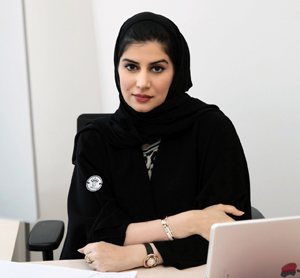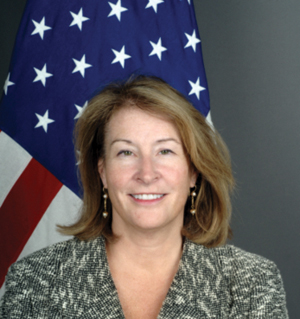
File photo used for representation only.
Qatar’s 800 MW Al Kharsaah Solar Power Plant will start its operations this year, as the country’s first utility scale solar power plant prepares to supply solar power for the upcoming Qatar 2022 World Cup, an official has said.
Speaking at a webinar on ‘Carbon Neutral World Cup 2022’ hosted by the US Chamber of Commerce’s US-Qatar Business Program in partnership with the Qatari Embassy recently, Bodour Al Meer, Sustainability Director at the Supreme Committee for Delivery and Legacy (SC), said Qatar has developed a unique hosting concept to deliver a World Cup like no other.

Bodour Al Meer, Sustainability Director at SC
“Our goal is to deliver an outstanding World Cup with a human, economic, social, and environmental legacy for Qatar and the region to support economic diversification and development. We’ll have the Al Kharsaah Solar Power Plant, which is delivered by Siraj Energy and the Qatar General Electricity & Water Corporation (Kahramaa), being switched on this year to cover the World Cup. Energy generated at this plant in one month is enough to cover all the World Cup stadiums for one entire year. It will also provide nearly 10 percent of our national power demand,” said Al Meer.
The QR1.7bn Al Kharsaah Solar Power Plant, which was first announced last year as part of Qatar’s commitment to host a carbon neutral World Cup, is expected to reduce 26 million tonnes of CO2 during its lifetime. During the first phase of the project, 350 MV is expected to be connected to the grid by early 2021.

Ambassador Greta Holtz, Chargé d’Affaires at the US Embassy in Qatar
Also speaking during the event, Ambassador Greta Holtz, Chargé d’Affaires at the US Embassy in Qatar, said events like Qatar’s carbon neutral World Cup are critically important because they present windows of opportunity to act locally but with global impact.
She said: “Our various government agencies, as well as our private sector enterprises stand ready to partner with Qatar in the long term, and with our state-of-the-art, sustainable and innovative solutions. We are stronger together as we face the challenges of generating greater sustainability and stemming the threat of climate change.
“The 2020 PPP law which Qatar passed also provided a method for US firms to expand and deepen their partnerships with Qatar. Qatar and the US plan to explore platforms for operation on topics of mutual concern, including environmental health, waste management, as well as the application of artificial intelligence, civil, and environmental engineering,” Holtz added.
About 1.5 million visitors are expected to visit Qatar during the World Cup. Eight world class stadiums will host four matches a day, while the Doha Metro connects all five World Cup stadiums.
Al Meer added: “For the first time, each stadium will have three types of green building certifications on design, construction management, and operations. We’re also planning to install air quality stations in all of our stadiums. The stadiums have been designed to consume 40 percent less water, and with extensive use of recycled water. The landscaping used in our stadiums also require little to no water use”.
Al Meer went on to reiterate Qatar’s strategic investment programmes to boost its food sustainability, as well as the country’s growing waste generation and recyling sectors which are seeing a growing number of public and private ventures.
During the event, Holtz also highlighted the partnership between NASA and the Qatar Foundation’s (QF) Qatar Environment and Energy Research Institute (QEERI) to conduct research on water security, which she said will not only promote conservation and sustainability, but will also provide high quality jobs of the future as countries emerge from the global pandemic.
Khush Choksy, Senior Vice-President for Middle East, Turkey, and Central Asia Affairs at the US Chamber of Commerce, added that apart from World Cup infrastructure projects, the US Chamber of Commerce is also eyeing new partnerships with Qatar in natural gas, logistics, and transportation sectors among others.
“Qatar is increasingly becoming one of the sports capitals of the world. The Supreme Committee for Delivery and Legacy has committed to building a carbon neutral World Cup and has invested in building highly sustainable infrastructure that can be used year-round, and long after the World Cup ends. Also, not just in Qatar, but in places in Africa, where it will donate entire stadiums. The Fifa World Cup 2022 will therefore set a benchmark across the world. It is also an opportunity for American companies to facilitate the economic growth and diversification in Qatar, which has resulted in new partnerships,” he added.




